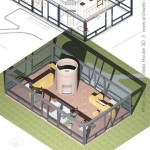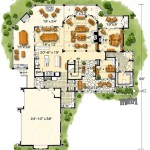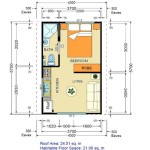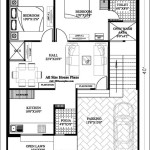Sri Lanka House Plans: Designs for Tropical Living
Sri Lanka, an island nation in the Indian Ocean, is renowned for its lush landscapes, diverse culture, and warm climate. The island's unique environment and lifestyle have influenced the design of Sri Lankan homes, creating a rich architectural heritage. This article explores the various types of Sri Lankan house plans, outlining their distinctive features and providing inspirations for those seeking to build their dream home in this tropical paradise.
Traditional Sri Lankan House Plans
Traditional Sri Lankan homes are characterized by their open floor plans, spacious verandahs, and intricate details. They are typically constructed with natural materials like wood, clay, and thatch, creating a sense of warmth and connection with nature. The "walauwa," a grand ancestral home, is a prominent example of traditional Sri Lankan architecture. Walauwas feature multiple courtyards, ornate facades, and elaborate rooflines, reflecting the wealth and status of their former inhabitants. Another common type of traditional home is the "ge," which is a smaller, more modest dwelling often found in rural areas. Ges are known for their simplicity, functionality, and integration with the surrounding environment.
Here are some key elements of traditional Sri Lankan house plans:
- Open floor plans: Traditional Sri Lankan homes prioritize airflow and natural light, with open spaces that connect different areas of the house.
- Verandahs: Verandahs, often covered with a roof, provide a transitional space between the interior and exterior, offering a place to relax, socialize, or enjoy the fresh air.
- Courtyards: Many Sri Lankan homes feature courtyards, which serve as central gathering spaces and provide a sense of privacy and tranquility.
- Natural materials: Traditional materials such as wood, clay, and thatch are used extensively, promoting a sense of sustainability and harmony with the environment.
- Ornamental details: Intricate carvings, decorative tilework, and colorful murals add a touch of artistry and culture to traditional Sri Lankan homes.
Modern Sri Lankan House Plans
While traditional aesthetics remain cherished, modern Sri Lankan house plans embrace contemporary design elements while incorporating the principles of tropical living. They often prioritize sustainability, energy efficiency, and seamless indoor-outdoor connections. Modern homes often incorporate features such as large windows, open plan layouts, and expansive balconies to maximize natural light and ventilation. Materials like concrete, steel, and glass are commonly used, creating a sleek and modern aesthetic.
Here are some key aspects of modern Sri Lankan house plans:
- Sustainability: Modern homes often incorporate green building practices like solar panels, rainwater harvesting, and energy-efficient appliances.
- Open plan living: The contemporary design encourages the flow of light and air, creating a sense of openness and spaciousness.
- Indoor-outdoor connection: Large windows, sliding doors, and covered patios blur the boundaries between indoor and outdoor spaces, maximizing the benefits of the tropical climate.
- Minimalist aesthetics: Clean lines, simple shapes, and neutral color palettes create a modern and sophisticated ambiance.
- Integration of technology: Smart home features such as automated lighting and climate control systems enhance comfort and convenience.
House Plans for Different Climates
Sri Lanka experiences a tropical monsoon climate, with variations in rainfall and temperature throughout the year. House plans are adapted to suit these climatic conditions. In coastal areas, homes are often designed with high ceilings and balconies to promote ventilation and reduce heat buildup. In mountainous regions, where temperatures are cooler, homes may feature thicker walls for insulation and fireplace spaces for warmth.
Consideration of the following elements is crucial for optimal comfort and functionality in different climates:
- Ventilation: Proper ventilation is essential for maintaining comfortable indoor temperatures and reducing humidity. This can be achieved through cross-ventilation, high ceilings, and strategically placed windows and doors.
- Sun control: Overexposure to direct sunlight can lead to excessive heat gain. Overhangs, awnings, and louvered windows help to shade the house and regulate sunlight.
- Water management: Sri Lanka experiences heavy rainfall, so it is important to consider drainage systems and waterproof materials to prevent water damage.
- Insulation: In cooler regions, insulation is essential to maintain comfortable temperatures. Consider using insulation materials in walls and ceilings to reduce heat loss or gain.
Sri Lankan house plans offer a diverse range of styles and features, combining traditional aesthetics with modern innovations. By understanding the specific needs and preferences of the homeowner, and the unique climatic conditions of Sri Lanka, a comfortable and functional home can be designed that perfectly complements the island's lifestyle. With careful planning and consideration, a home that reflects the beauty and spirit of Sri Lanka can be realized.

Plan 0015 1 Plans Lk Home Sri Lanka

Kedella Homes Design Build Your Dream Home With Us

House Plan Sri Lanka Nara Engineering 1000 3d Designs

Plan 0018 1 Plans Lk Home Sri Lanka

House Plan Sri Lanka Nara Best Construction Plans 164805 Design New Home

Top 200 House Designs In Sri Lanka And 3d Home Plans For 2024 By Lex Duco Two Y Roof Design Modern New

House Plan Sri Lanka Nara Engineering 1000 3d Designs

Plan 0020 1 Plans Lk Home Sri Lanka

O Builders Modern House Plans In Sri Lanka

House Plan In Sri Lanka Single Floor Three Bed Rooms Sky Architec Sinhala Srilanka New Plans Simple Design








